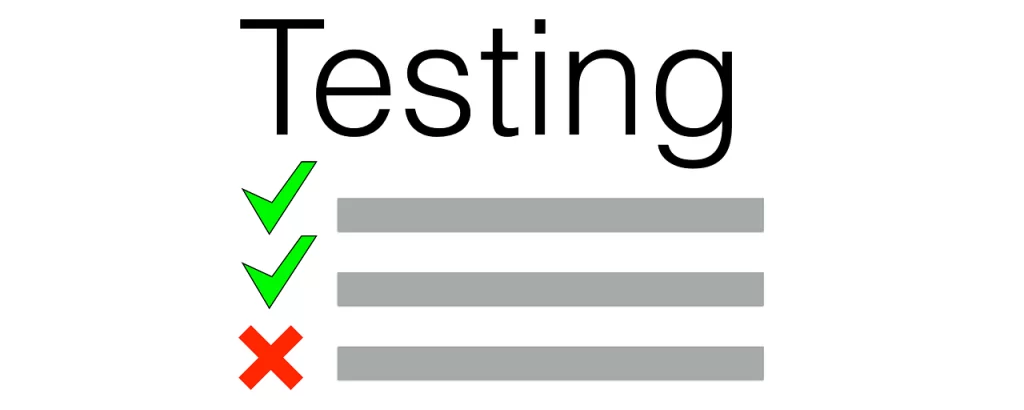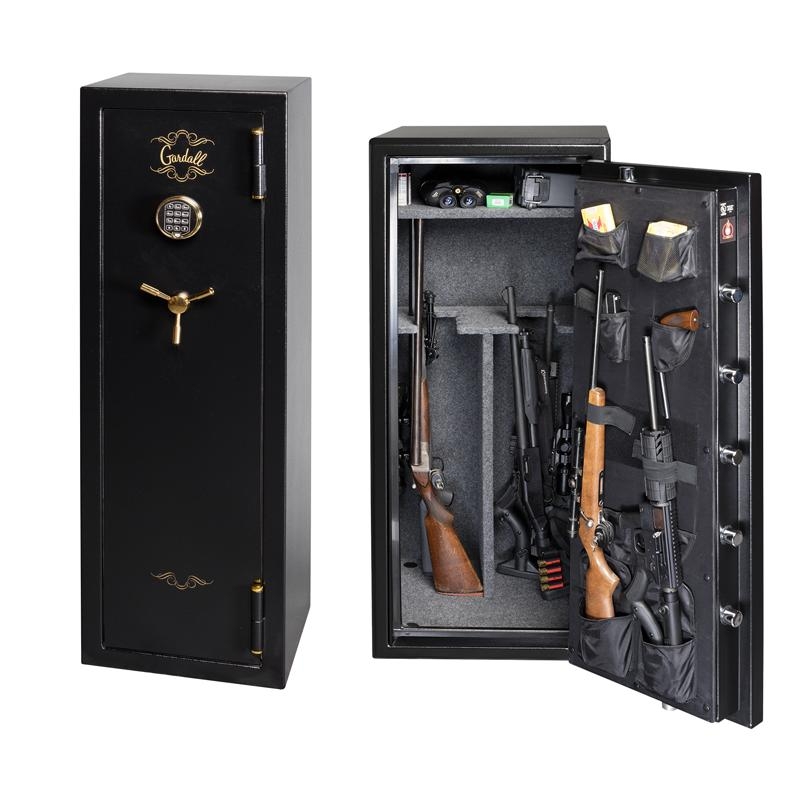As security professionals, we recommend taking full advantage of any possible means to effectively lock up valuables. Of course, this includes installing and using heavy-duty locking hardware in your businesses and homes. Additionally, it also means finding even more secure ways to lock up your valuables when you need it. In these cases, we recommend installing a safe to give your possessions the true “lockdown” treatment. Unfortunately, like many items in our industry, safes can provide some confusion to shoppers. The wide range of styles and price points can make anyone’s head spin. Moreover, if you choose the wrong safe, you may not experience the security you need! Over our 36-plus years in business, we’ve helped eliminate the confusion for many people wishing for the security a safe can provide. Today, we’ll share some valuable information to assist in choosing the right safe for you.
First, we’ll explain the ratings that we reference when we describe safes. Having this lingo under your belt will go a long way towards understanding the rest of this post. Then, we’ll get into the “nitty-gritty” of what different types of safes have to offer. These include safes designed to thwart the threats of burglary and fire that people commonly wish to secure against. From there, we’ll also discuss the merits of a couple specialty safes. These include gun safes, which provide extremely important security for households with firearms. Finally, we’ll also spend some time looking at some budget-friendly safes that can keep valuables out of sight and out of mind of opportunistic visitors. Now, let’s dive in with a look at the safe industry’s ratings!
Understanding the Industry Rating Systems
The rating systems used in the safe industry indicate a couple different things. First, they often point to specific construction criteria. Secondly, they also indicate the passing of specific tests done either by the safe manufacturer or an outside testing agency such as Underwriter’s Laboratory (or “UL”) or Intertek Testing Services (confusingly known as “ETL” because of their former identity as “Edison Testing Laboratories”). Starting with one of the most basic safe ratings, you’ll often see products listed as “B” rated safes. This indicates a safe that has a door less than 1″ thick and a body less than half an inch thick. Inversely, “C”-rated safes have doors and walls whose thickness exceeds these two thresholds. As safe quality gets higher, other ratings come into play.

Part of the confusion surrounding safe shopping lies in the various tests and ratings safes receive from outside sources.
Safes designed to stop blunt force attacks often receive a “TL” rating. This indicates that these safes meet specific construction standards, such either having as a 750-lb. minimum weight or the instructions for mounting the safe in either a larger safe or concrete bricks. Additionally, safes with these ratings must also withstand attacks by tools for a specified amount of time — thus the “TL” in the rating name. A safe with a TL-15 rating must withstand attacks for 15 minutes, while a TL-30 safe must withstand the same for 30 minutes.
Finally, safes often come with fire ratings as well. Similarly to tool ratings, these ratings list the number of minutes that they will secure items inside from damage during a fire. For example, you can get safes with 30, 60, 90, and 120-minute ratings in this category. Sometimes, these ratings are “factory” ratings from the manufacturer, and sometimes they come from TL or ETL testing. Now, let’s use this knowledge to check out the types of safes we install in homes, and how you can go about choosing the right safe for you.
Choosing the Right Safe for You
As you can probably guess from the way safes get tested and grouped, you have plenty of options when purchasing your own safe. Rather than offer a “catchall” solution, we generally work with you to find a safe that offers specific security. Knowing your biggest security threats and what you wish to put in your safe helps us narrow down your options. Additionally, you’ll also want a basic budget in mind as well. A safe’s industry ratings, size, and weight all play a role in determining its overall cost. Of course, the more security you get, the more you pay for, and good security doesn’t come cheap. However, by avoiding paying for size or security ratings people don’t need, we can often meet customers’ budgets. Let’s take a look at some of the most common “types” of safes here.
Burglar and Fire Safes
As you’ve likely deduced from the ratings systems described above, safe manufacturers specifically work to thwart these two threats. Many people focus mainly on one of these threats. For example, restaurants and other businesses often lean towards burglary security in the safes that they choose. After all, they have many employees that know where the money goes at the end of the day. Of course, thieves breaking in to a business often find these safes in office areas as well.
For these reasons, similar commercial applications make great locations for safes that can withstand the toughest of blunt force and tool-based attacks. You can get these safes in all kinds of sizes, which means that if you do wish to secure cash deposits or valuable documents, we can provide you with a small but relatively sturdy and heavy safe with a burglary rating. If you wish to store a large amount of valuables or heirlooms in a non-commercial setting, we also offer larger safes that have any burglary rating you may desire.
Like gun safes, fire safes also come in different sizes. Factory-rated safes that do not undergo independent testing can be had for less money if you don’t wish to pay top dollar as well. Finally, we also offer combination burglary and fire safes that can provide some security against both threats. These safes still often feature a more robust security rating in one of these areas over the other. Therefore, we encourage you to consult a security company such as ourselves so you know exactly what type of security to expect from any safe you purchase. Now, let’s shift our focus to weapon-storing safes.
Gun Safes

Gun safes, such as these models made by Gardall, can safeguard your guns against both accidents and burglars.
Many families have at least one hunting or sport-shooting enthusiast in their ranks. For these individuals, a gun safe can provide unique security. We offer safes specifically designed for certain types and quantities of firearms. These safes check off a couple security “checkpoints.” For one, they keep guns out of the hands of intruders and children. Furthermore, as we pointed out in our Best Practices to Improve Bedroom Security, these safes help keep gun owners on the right side of the law. Massachusetts law requires keeping guns in a locked container if they are not locked with a tamper-resistant safety device, such as a mechanical lock.
Safes designed for guns, such as the ones pictured here, often include inserts and straps to hold ammo and other hunting gear. You can get gun safes that hold a variety of sizes and amounts of firearms. Additionally, you can also get them with different burglary and fire ratings. Therefore, these safes still fall under the two categories listed above. The major different lies in the fact that manufacturers design them to hold weapons and any related items in one convenient location. Obviously, these safes provide a tremendous service due to the life safety factor involved. Next up, we’ll describe a few options for those working on choosing the right safe while on a budget.
Light Duty Safes
In addition to offering the “best of the best” when it comes to safes, we also offer budget options as well. Unlike the safes in previous sections, these safes really only hide your valuables and keep them away from the most timid of thieves. Therefore, we certainly do not recommend them for commercial use. However, they still provide some light security, especially against curious visitors and workers in your home. For example, microwave safes — so named because of the resemblance to a microwave — come with a more than palatable price point.
For slightly more security, we also install wall safes. These safes both house and hide your valuables from the wrong eyes. We install these thin safes by cutting a section of drywall and installing the outer walls of the safe on the studs. At that point, homeowners generally hang a mirror or picture over the safe to keep it hidden. Moreover, some customers install these safes in closets so they end up covered by clothing. Wall safes represent a creative means of securing valuables in your home on a budget.
Putting it All Together
We hope that this post helps you with choosing the right safe for your security needs! Furthermore, we also encourage you to contact us with any questions this post may raise for you. We will happily answer any security-related inquiries that you may have. Moreover, we also invite you to take advantage of our free site survey program. Our company gladly provides complimentary security audits and equipment quotes to both new and existing customers alike. This includes identifying where we can install a safe on your property, and how we’d go about making it happen! While on site, we can also address any additional security concerns you may have. Together, we can create a complete security plan to help you keep your property, and your most irreplaceable possessions, as safe and secure as possible.
